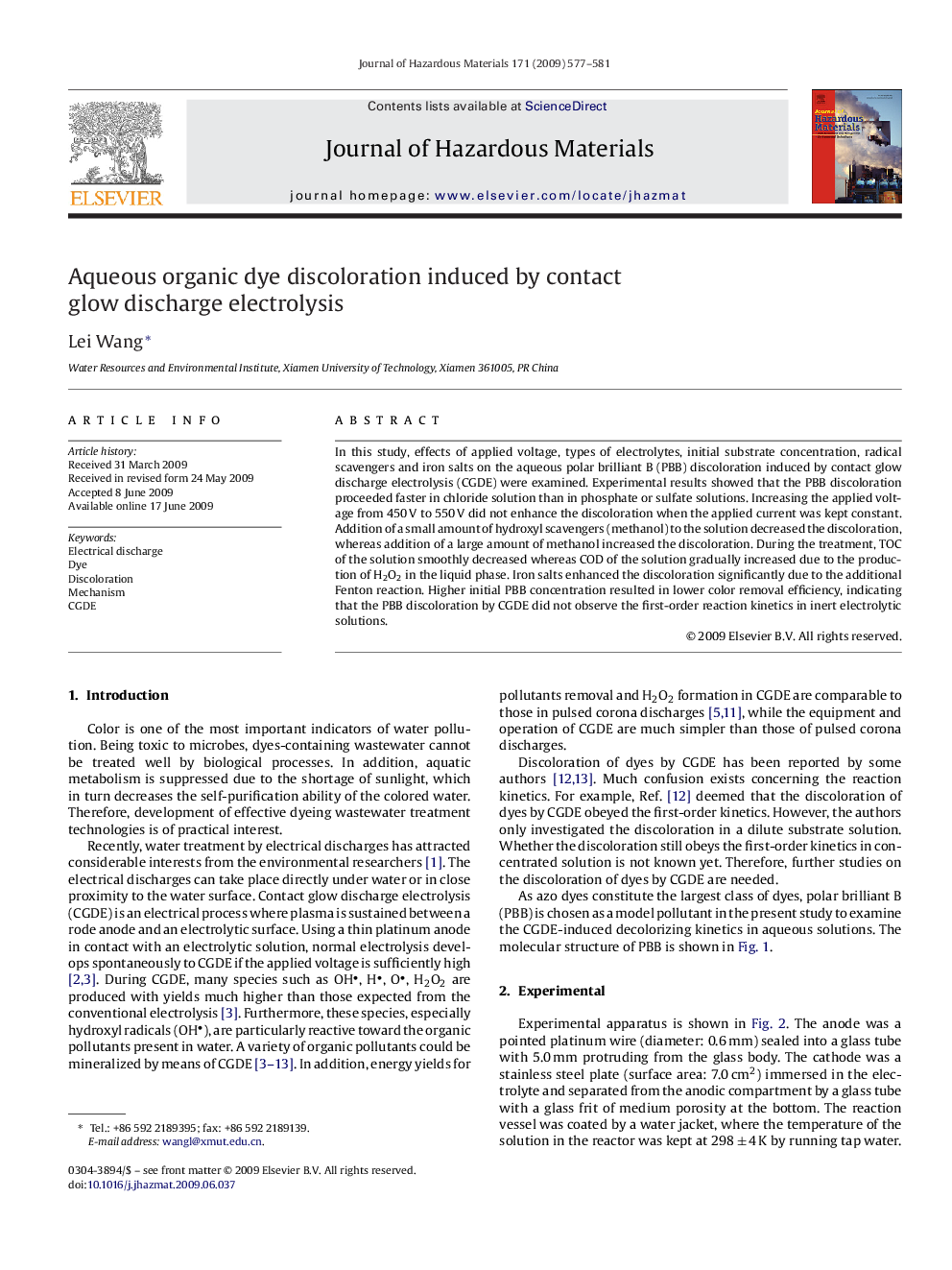| Article ID | Journal | Published Year | Pages | File Type |
|---|---|---|---|---|
| 581173 | Journal of Hazardous Materials | 2009 | 5 Pages |
Abstract
In this study, effects of applied voltage, types of electrolytes, initial substrate concentration, radical scavengers and iron salts on the aqueous polar brilliant B (PBB) discoloration induced by contact glow discharge electrolysis (CGDE) were examined. Experimental results showed that the PBB discoloration proceeded faster in chloride solution than in phosphate or sulfate solutions. Increasing the applied voltage from 450Â V to 550Â V did not enhance the discoloration when the applied current was kept constant. Addition of a small amount of hydroxyl scavengers (methanol) to the solution decreased the discoloration, whereas addition of a large amount of methanol increased the discoloration. During the treatment, TOC of the solution smoothly decreased whereas COD of the solution gradually increased due to the production of H2O2 in the liquid phase. Iron salts enhanced the discoloration significantly due to the additional Fenton reaction. Higher initial PBB concentration resulted in lower color removal efficiency, indicating that the PBB discoloration by CGDE did not observe the first-order reaction kinetics in inert electrolytic solutions.
Related Topics
Physical Sciences and Engineering
Chemical Engineering
Chemical Health and Safety
Authors
Lei Wang,
